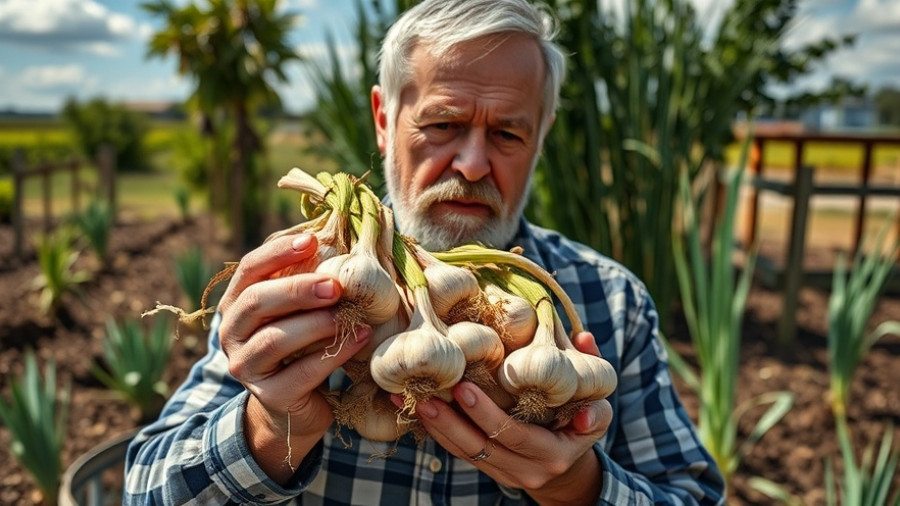
Understanding Garlic: A Gardener's Delight
If you've ever experienced the sweet anticipation of a garlic harvest only to find it disappointing, you're not alone. Experienced and novice gardeners alike face challenges when it comes to growing garlic, a crop that, when successful, can yield a bounty of flavor and health benefits. In this exploration, we will delve into the eight common reasons your garlic might fail, based on insights from a recent informative video about garlic cultivation.
In '8 Reasons Your Garlic Will Fail,' critical insights were shared about garlic cultivation, prompting us to examine common pitfalls and how to avoid them.
The Importance of Choosing the Right Variety and Timing
Garlic comes in two main types: hard neck and soft neck. Each variety has its unique requirements. For instance, hard neck garlic needs to be grown in cooler climates and planted in the fall before the first frost, while soft neck garlic can thrive in warmer zones and can be planted in either fall or spring. Understanding these specifics is crucial for planting successfully and ensuring your garlic has every opportunity to flourish.
Getting the Depth Right: No Garlic Left Behind
Once you've selected your variety, the next essential step is planting depth. Garlic bulbs should be placed about 2 to 3 inches beneath the soil surface. Planting too deeply can prevent the garlic from sprouting properly, while planting too shallow exposes it to harsh weather. A light mulch layer can help prevent temperature fluctuations, making depth placement even more vital in regions with varied climates.
Spacing Matters: Give Your Garlic Room to Grow
Garlic needs space to thrive, so ensuring proper spacing is essential. Ideally, plant garlic cloves 4 to 6 inches apart and maintain 1.5 to 2 feet between rows if you're planting in a more traditional manner. Without enough room, garlic cloves will compete for nutrients and water, leading to poorer-quality bulbs. Remember, the secret success of this crop lies underground, often unnoticed until harvest time.
The Watering Balancing Act: Consistency is Key
Garlic loves moisture but hates to be waterlogged. Striking the right balance is crucial to avoid root rot or poor bulb development. Ensure proper drainage to prevent puddles, especially as garlic grows through wet winter months, which can lead to disastrous results. Frequent checks will help you ensure that the moisture levels are just right during the bulbing phase.
Feeding Your Garlic at the Right Times
Fertilization is another critical aspect of garlic growth. Garlic should only be fertilized twice—once in spring, and again about a month later. Be cautious not to over-fertilize, especially with nitrogen, as it encourages excessive leaf growth rather than the bulb formations we seek. Timing your feeding can significantly enhance the quality of your garlic and ensure that what you ultimately harvest is robust and flavorful.
Harvesting at the Right Moment: Timing is Everything
Finally, proper timing is crucial when it comes to harvest. To achieve the best yield, garlic should be harvested when 1/2 to 2/3 of the foliage has turned yellow and started withering. Any earlier, and the bulbs will be immature; any later, and the papery skins may start to break down, leading to harmful rot during storage. Plan your harvest for dry days to preserve quality during curing.
Conclusion: Cultivating Success In Your Garlic Garden
By paying attention to each of these eight factors—variety, planting depth, spacing, drainage, feeding schedules, and harvest timing—you can transform a potential disaster into a bountiful garlic harvest. Remember that gardening is often about trial and error, and every season offers the chance to learn. Embrace these lessons to ensure that your garlic growing endeavors yield delicious rewards. Happy gardening!
 Add Row
Add Row  Add
Add 




Write A Comment